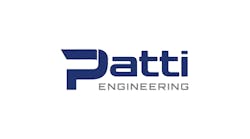For some time, we have seen a variety of vendor literature, press releases and white papers extolling the great savings achieved with one technology or another. Buses have been no exception. The gist of one white paper I saw recently about the ever-multiplying, multi-headed hydra of fieldbus “standards” was that “Bus ‘XYP’ uses slightly cheaper devices and allows you to put more devices on each segment; therefore, users will find it cheaper than Foundation fieldbus.
The author based his conclusions on an interpretation of the aging AG-181 Systems Engineering Guide written by Foundation technology end users Ian Verhappen of Syncrude, Herman Storey, of Shell et al., in 2003. AG-181 consists largely of selected excerpts from the specs of early adopters.
Apparently the white paper’s authors didn’t bother to read the Guide, because section 6.4 explicitly says to load your segments according to the criticality of the services and segregate less critical devices from the critical ones.
Some users will put energy-adding loops (e.g., steam to a reboiler) on a different segment than energy-removing loops (e.g., column reflux), so that even during a loss-of-view episode, at least one loop will be under the operator’s control and oversight.
The biggest concern some users have (myself included) is protecting critical loops or devices from inadvertent calamities caused by human activity. Since we don’t yet have a dog to bite anyone who tries to touch certain loops, we worry that some non-critical activity, say adding a device, will have an unforeseen impact on the rest of the segment. The solution is to put the critical devices on segments largely by themselves.
As a result, process industry end users end up with an average segment loading far below the maximum possible under any specific implementation. I have yet to see or hear of any end user’s plant that loaded every segment to the max (16 devices for most DCS vendors) – or even came close. If you’re out there, please drop me a line.
Dick Caro and I are competing for who can say it more succinctly, but I think we agree on this advice for end users trying to choose a bus: “Use what your systems manufacturer is good at.” If your favorite system is weighted toward Profibus, you may find that Foundation technology is not the optimum choice. If your favorite host has a primitive or very limited implementation of Foundation fieldbus, maybe you should just install HART or its proprietary protocol.
Even if you are putting a PLC on your process plant, you’ll benefit from loading your segments judiciously; that is, don’t “max out” every segment or even push the limit on most. In the end, the average devices-per-segment is driven by the process on which it’s being applied. Processes with a significant number of critical services will end up averaging fewer devices per segment than tamer ones.
The point is that thinking “cheapness” is a leading priority for end users in the process industries is misguided. Did Honeywell become the dominant supplier of DCSs in the 1980s and 90s by being the cheapest? Even when we end users are forced to bid out instruments and controls on a project, we hope to limit the bids to suppliers who comprehend the priorities of our business. If you’ve spent any time serving the process industries, you know that the pennies we might save on a device or a bus technology is dwarfed by the millions we lose when the plant goes down. Unlike an assembly line, stopping abruptly and restarting carries extraordinary costs and dangers and is ripe with opportunities for additional hazards and risk.
Those who aren’t employed in a process plant can fall victim to distorted views of our priorities, no matter which bus is their favorite. While input from fellow end users in your industry can be myopic or biased, it’s probably the most credible and meaningful commentary for those pondering a technology change.



